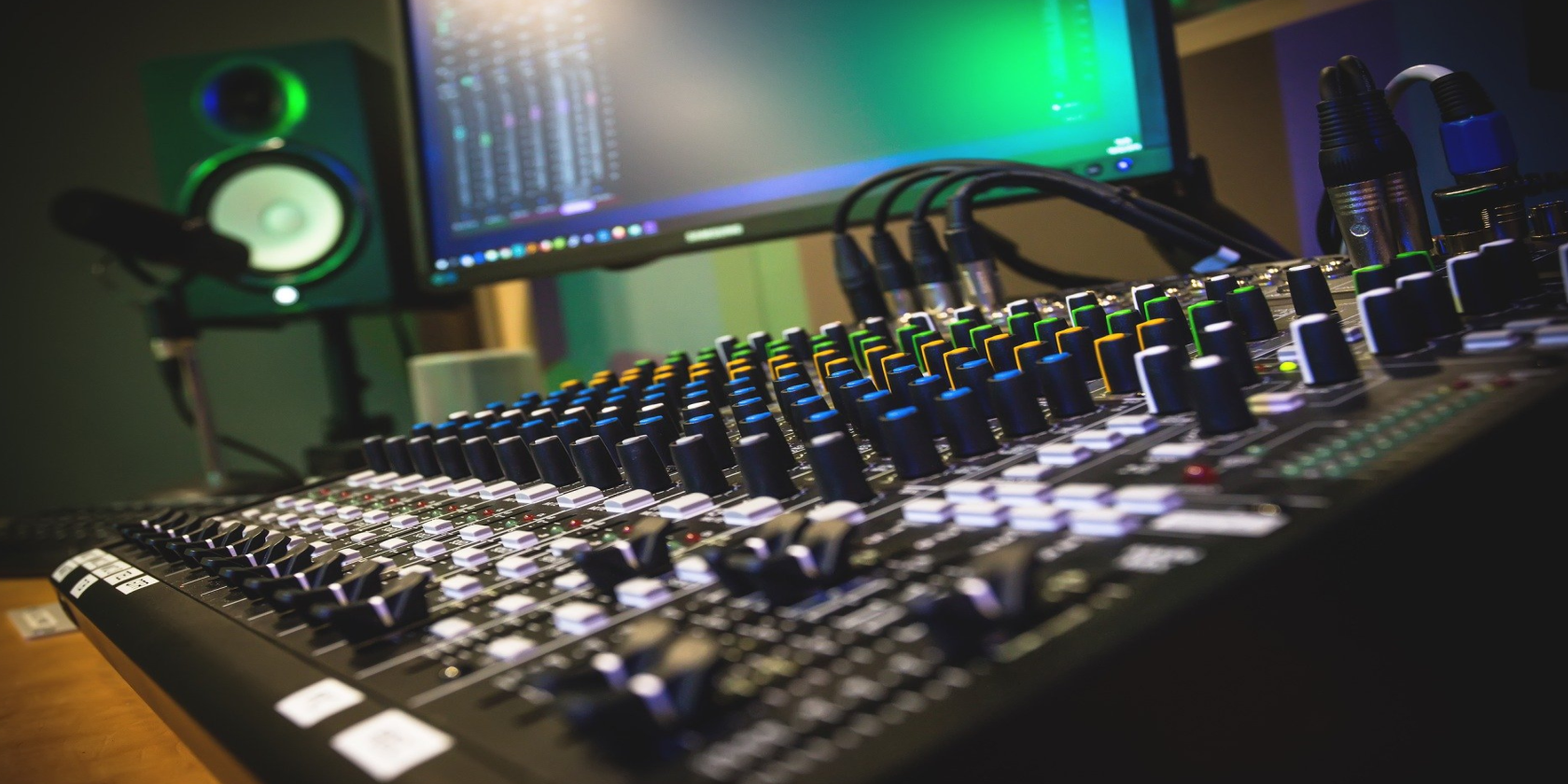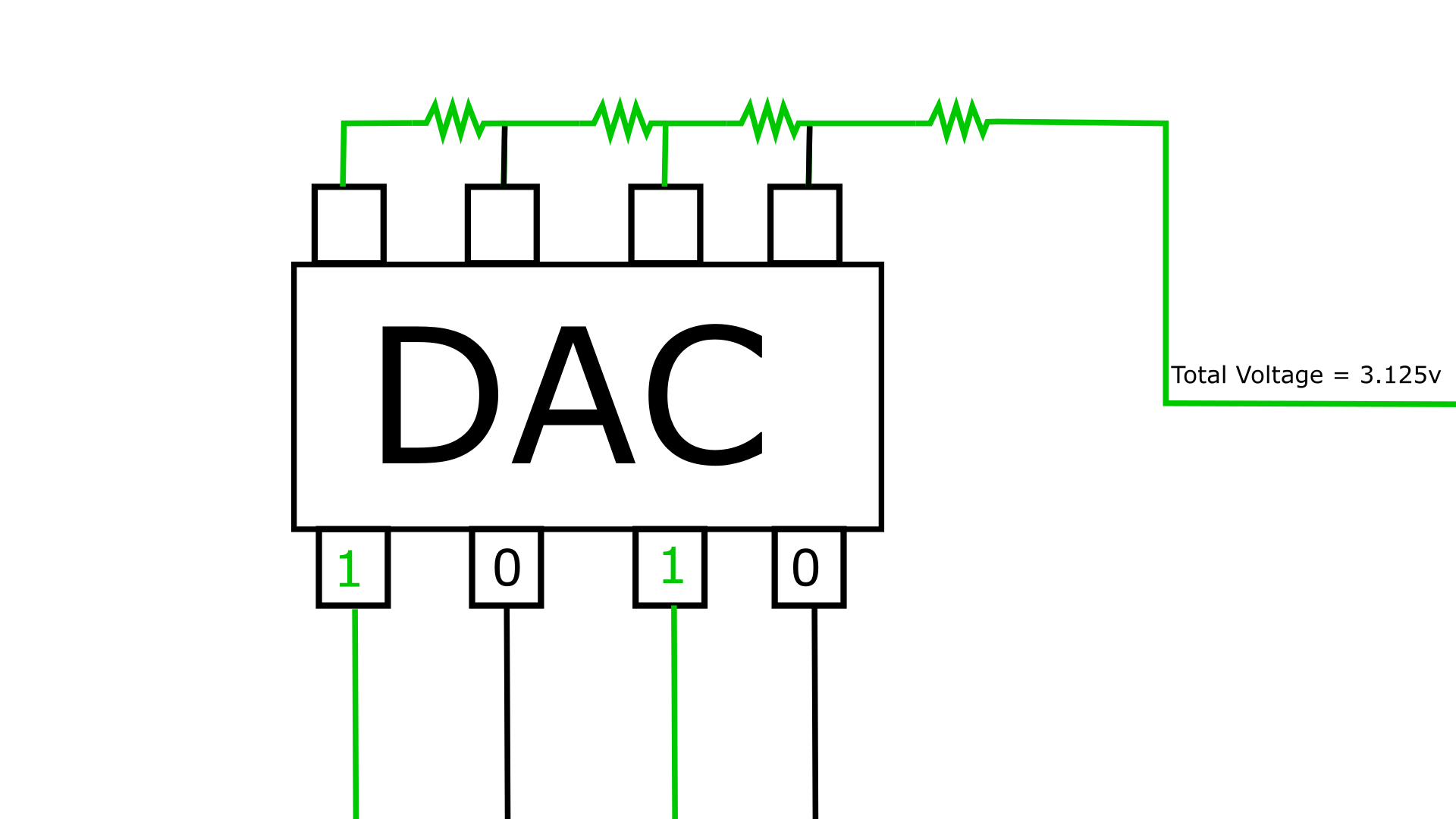When dealing with digital audio, you'll often see terms like audio resolution, sample rate, and others that describe a file's characteristics. It's important to know what separates good audio from bad audio, so it'd help to be familiar with these terms.
One term is called bit depth, and it's tossed around a lot nowadays without much explanation. When someone says that it's 16-bit or 24-bit audio, they're talking about the audio's bit depth. Since bit-depth is audio 101, here's an explanation of what this term means and if it's necessary to pick higher bit depths.
What Is Bit Depth?
Each digital sound wave is broken up into samples, much like how a digital image is broken up into samples. Each sample has a range of possible amplitudes (volumes) that can be produced. This range of amplitudes is called the dynamic range.
Below is an example of a 4-bit Digital to Analog Converter (DAC). Each sample is assigned a combination of four binary digits, corresponding to the number of output pins. Different combinations of binary digits equate to different total voltages that travel to the speaker or headphone.
In a 4-bit DAC, there are 16 possible combinations of binary digits that can be assigned, which means that there are 16 different voltages that can be sent to the speaker. Higher voltages mean higher amplitudes and vice versa.
A higher bit depth doesn't equate to higher audio quality, however. The important thing about higher bit depths is the reduction of digital noise. At lower bit depths, you hear much more digital noise. If you hear music using the aforementioned 4-bit DAC, you'd hear a ton of noise.
What Is 16-Bit Audio?
When it comes to listening to music, you're going to want at least 16-bit audio. Even 8-bit audio has a lot of noise, as shown in the example below. That noticeable hiss in the background is the digital noise that's present with low-bit audio.
We've been enjoying 16-bit audio for decades, as audio on CDs is 16-bit. Here's the same music example below but rendered in 16-bit audio; there's no hiss to be heard. This is because 8-bit audio has 256 possible combinations of binary digits, while 16-bit audio has 65,536, which is an exponential increase.
Even though the world is pretty much done with CDs, 16-bit audio is still pretty standard across the board. A lot of media is still distributed as 16-bit audio files. Listening to 16-bit audio is good, but editing could be an issue, which is where a higher bit depth is necessary.
What Is 24-Bit Audio?
A step-up from 16-bit audio is 24-bit audio. People typically conflate bit depth with actual audio quality. So, when they see 24-bit audio, they automatically assume clearer or more high-definition audio, but this isn't really the case. 24-bit audio has a higher dynamic range (16,777,216 possible binary combinations) and reduced noise. The question is: If we can't hear the full spectrum of noise in 16-bit audio, then what's the point of 24-bit audio?
While noise is basically nonexistent between both bit depths, 24-bit audio is better for studio audio editing. At higher volumes, audio starts to distort. A higher dynamic range means that the audio can reach louder volumes before distortion sets in. 24-bit audio is optimal for editing in that regard.
What Is 32-Bit Audio? Do We Really Need It?
We have inaudible noise with 16-bit audio and better editing with 24-bit audio, but what's the deal with 32-bit audio? You get 4,294,967,296 different combinations of binary digits with 32-bit audio, but is that really necessary? To be honest, not really.
The only real benefit of 32-bit audio is the added headroom when it comes to editing. While you get less distortion with 32-bit audio, you have enough headroom with 24-bit audio with room to spare. The differences between bit depths are inaudible and not really worth the hype.
16-Bit Audio Is Still the Sweet Spot
A lot of terms go over peoples' heads, and a lot of companies bank on that, and there's a lot of confusion over the difference between hi-res and lossless audio.
People tend to think that bigger numbers mean better quality, but in reality, listening to good old 16-audio isn't really a step back. You've been listening to it with CDs, and there's no real reason to stop now.



